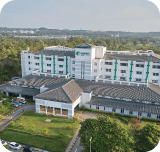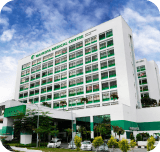Wellness
Lower back pain – what you need to know
24 April 2020
Share

What is an orthopaedic condition?
This is a term describing medical conditions that affect the bones, joints, muscles, tendons, and ligaments due to injury, overuse, or age.
Causes of lower back pain:
- Back muscle strain
- Lumbar spinal stenosis/degeneration
- Slipped disc
- Disc degeneration
- Scoliosis
- Facet joint arthritis
Lower back pain can also be caused by other non-orthopaedic cases such as pancreas disease.
Risk factors of lower back pain
Some people may have a higher risk of lower back pain. Some of these risks may only require a simple fix or change in habits. Sometimes lower back pain may improve when these risk factors are taken care of.
- Obesity
- Smoking
- Strain such as lifting
- Poor posture
Symptoms to watch out for:
The lower back pain is usually worsened by activities such as heavy load or bending forward through poor posture. Patients may also complain of back stiffness. Some of the patients may experience lower limb numbness, tingling sensation or weakness if there is nerve impingement. This includes:
- Rest pain, night pain
- Loss of weight and appetite
- Fever, chills, rigours
- Numbness, tingling sensation or weakness over the lower limbs
- Bowel or bladder symptoms
IMPORTANT: Consult an orthopaedic doctor immediately if you show the above symptoms.
Investigating lower back pain
X-rays and magnetic resonance imaging (MRI) of the lumbar spine (lower back) are commonly used to confirm a diagnosis.
X-rays of the lower back can show late features of spine degeneration(gradual loss of structure and function of the spine over time).
MRI evaluates the lower back in more detail. Demonstrating detailed features of the intervertebral disc, small joints of the back, muscles, and nerves. If there are clinical or radiological features of nerve compression, a nerve conduction test may also be performed to evaluate the function of the nerves.
Treatment for lower back pain
Usual treatment for lower back pain includes a course of physiotherapy, rest, and anti-inflammatory medications.
During physiotherapy, a patient will go through trigger points massage, lumbar traction, and muscle strengthening. Building the area around the lower back to support the patient's spine.
Lumbar spine steroid injections can also be done to reduce inflammation and for pain control.
Surgery for lower back pain
There are also options for surgery if non-surgical options fail. The surgical options will depend on the cause of lower back pain. Plus, the orthopaedic surgeon will discuss the pros and cons of every option available, in detail.
There are minimally invasive options such as radiofrequency ablation or nucleoplasty for pain control. There are also minimally invasive endoscopic (keyhole) options for laminectomy, discectomy, facet joint surgery, lumbar decompression, etc.
For minimally invasive surgeries, patients are warded overnight and discharged the next day. After surgery, patients will need physiotherapy for about 3 to 6 months. Then, the surgeons will review the patient’s condition regularly after surgery to ensure complete recovery.



